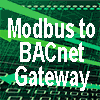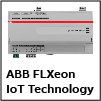



|
December 2018 |
Innovations in Comfort, Efficiency, and Safety Solutions. |
|
Edge-ifcation in the "Era of Connection" Now we are in the fourth, an era
of connection between our physical, digital, and biological worlds; a
new phase of massive creative potential, where everyone has the power
to share anything with anyone. This era brings with it an avalanche of
new, creative ideas and opportunities.
|
|
| Articles |
| Interviews |
| Releases |
| New Products |
| Reviews |

|
| Editorial |
| Events |
| Sponsors |
| Site Search |
| Newsletters |

|
| Archives |
| Past Issues |
| Home |
| Editors |
| eDucation |

|
| Training |
| Links |
| Software |
| Subscribe |
 |
Edge-ifcation in the "Era of Connection"
Klaus
Schwab, chairman of the World Economic Forum, refers to the present era
of connectivity as the “Fourth Industrial Revolution.” The first
Industrial Revolution was powered by water and steam, changing the way
we built things. Electricity powered the second and enabled mass
production. In the third, electronics and information technology
accelerated scale and complexity.
Now we are in the fourth, an era of connection between our physical,
digital, and biological worlds; a new phase of massive creative
potential, where everyone has the power to share anything with anyone.
This era brings with it an avalanche of new, creative ideas and
opportunities.
Disrupt Yourself - Now
The era of connection
brings disruption for us all, but we as an industry have an edge that has rapidly evolved into an Edge-fication.
We need to disrupt our complacent self to proactively manage this
disruption. Do not wait to be disrupted as it will then be too late,
disrupt yourself.....now. The retreading of your mindset needs to start
now; if you wait until you are not connected to the era your efforts will be consumed building band-aids to heal your
wounds.
Take
your knowledge of your journey to today's edge with your decades of
experience of automating buildings and learn how to become a major player
in this new connection era.
Building
Automation's collision courses with the Internet of Things (IoT) has
provided us with a course correction and understanding of how
valuable we are as part of this new era.
Boiler Room Bob, the traditional keeper of the secret software code designed to provide thermal monotony, has metamorphosed into a Connection of Change as the Chief Technical Officer (CTO). Who now talks directly to the CEO about Our People that are our reason for reason in the creation and the recreation of existing and new people-powered buildings.
The C suite is now trying to instill and install a new virtual fabric Building Emotion to provide a solid connection to our community of mobile nomads that now inhabit our buildings.
Yet as an industry, we stay on autopilot navigating the objects of the chapters outlined in our digital transformation (DX) hoping to avoid a direct collision. This is not sustainable.
Wake up from your blank stare (stair) ;-0 Open everything including your mind. As you drive down the connection highway, you need to disrupt yourself, not wait to be disrupted by a collision you caused.
Moving Intelligence to the Building Internet of Things Edge Published: November 2nd, 2018
The above article provides these pull quotes with insight about the advantages and necessity of Edge-ifcation.
Creating
“healthy, safe and productive environments” is not as straightforward
as it sounds, however. One person’s productive environment is another’s
distracting space, one person’s sleep is affected more by bright light
than the next, some people feel secure in a locked room while others
feel safer out in the open. Each person is different, even when it
comes to these basic aspects of the urban environment, so as smart
technology emerges it must give control, directly or indirectly to the
user. And that requires these smart systems to move intelligence to the
Edge.
The evolution of a human-centric
Internet of Things (IoT) has introduced a new paradigm for smart
buildings that supports a decentralized architecture where a great deal
of analytics processing can be done at the edge (the sensor unit)
instead of the cloud or a central server. This computing approach,
often called “edge computing” or “fog computing,” provides real-time
intelligence and greater control agility while at the same time
off-loading the heavy communications traffic. The edge is also
user-facing and by giving edge devices greater intelligence the IoT can
be more responsive to user preferences.
McKinsey & Company declare in this great article "the connected-building era"
Some random pull quotes from article,
Connected buildings could introduce a new way of working. Here’s what it will take for them to become mainstream.
A step change is on the horizon, however, with a focus on user-centric features that evolve the ways in which occupants benefit from their surroundings. A set of buildings are starting to bring these benefits to light, serving as test cases for the future of infrastructure technology.
These facilities are using data to provide
tangible new benefits to occupants and operators, and this
connectivity-driven disruption is poised to unlock significant value
for infrastructure suppliers across heating, ventilation, and air
conditioning (HVAC), lighting, IT, security, and safety.
As an industry for the last 20 years we have been struggling with "the connected-building era" it is what we do for a living as an industry but has now become a thing well defined by a management company like McKinsey.
This article speaks well to our need to get on with our own self-disruption.
Cheating “Death by 1000 cuts” The technological approach to a more sustainable future will most likely lie in harmonizing BACnet and IoT underneath a BACnet umbrella, utilizing Haystack and the likes to get things to talk together in a better way and to make it easier to apply analytics as well. Part 1 of 2 Nicolas Waern, CEO, Go-IoT
This situation will most likely become worse before it becomes any
better. There will be a lot of integration problems and severe
configuration problems moving forward. But this can be avoided if
companies dare to think about disrupting themselves. If not, they are
bound to get disrupted.
Inviting others from across disciplines is the way to go in order to
bring future products to market faster. These insights and many more
are being created when Ken Sinclair and John Petze are discussing the
Maker movement, Edge-ifcation and what needs to be done.
This article from our contributing editor Marc defines the value of DX.
Digital Transformation (DX) is the acceleration of business and operational activities, processes, competencies and models to fully leverage the opportunities that digital technologies deliver and their outcomes. - Marc Petock, Chief Communications Officer, Vice President, Marketing, Lynxspring Inc.
DX has changed the
way we approach what we do. It is reshaping how we manage, look at and
evaluate our buildings and facilities. Digital transformation has
changed the landscape in which buildings must operate and must be
embraced to remain competitive. By blending traditional building assets
with digital technologies such as edge connectivity, data, analytics,
extended services, DX is redefining the facility structure and
stakeholder relationships. This new landscape is helping building
owners, operators, and providers across all sector types radically
improve performance, efficiency and asset value.
So, what are some of the beginning building blocks for DX? Start with the right mindset and culture. Specifically creating a culture of digital transformation by inŽvesting in organizational capabilities that are embraced throughout OT, IT and the C-Suite. While technology is the enabler and certainly a key component, it's not the only one. Just implementing technology doesn't get to DX. In order to benefit fully from the evolution of DX, the internal culture and mindset, as well as those of your providers and supply chain, must be part of the equation.
This group of disrupter's that disrupt other for a living are connecting @AHRExpo Atlanta to discuss the,
Future of the “Super” Master Systems Integrator
Tue. January 15 3:00 PM - 4:00 PM | B311 This panel session will provide an interactive analysis of the attributes of successful Master Systems Integrators (MSI), the challenges they face and how to overcome those challenges to develop into a “Super” MSI! Staffing is proving to be a growing issue within the industry and the panelists will explore how to find the right people, how to bring them into this industry properly, and how to continue to develop them to build the foundation for the greatest chance of success.
Although in concept an MSI is easy to imagine it is super hard to achieve in a rapidly evolving era of connection.
For insight to the scope and speed of integration now occurring watch or listen to this,
ControlTalk NOW — Smart Buildings Videocast and PodCast for week ending Nov 4, 2018,
features Lynxspring's Marc Petock, who is joined by Adam Haynes, Sr
Product Owner and Justin McCullough, Chief Innovation and Product
Officer, with the Facility Solutions Group, one of North America's top
Master Systems Integrators. Next up, we have Ken Sinclair, owner and
editor of Automated Buildings, who discusses his November edition
theme: "Edge-ification".
 I learned lots from the Texas MSI guys at the start of the interview,
then I jump in at the 42-minute mark.
I learned lots from the Texas MSI guys at the start of the interview,
then I jump in at the 42-minute mark.
Seven years ago a few of us from the industry attending AHRExpo Chicago with the help our contributing editor Marc Petock
came to the conclusion that we are all in the connection business.
That
is all we do, connect things to things, so we created the first every Connection Community Collaboratory.
Please come and join the discussion of industry leaders in Atlanta @AHRExpo and help us better define our Human connection to "the connected-building era"
Exploring Our Human Connection: 7th Annual Connection Community Collaboratory
Tue.
January 15 1:30 PM - 2:30 PM | B311 How do we best "Look" with rapidly
evolving video analytics, "Listen" with natural language interaction
and learning, using the personal assistants that are evolving as part
of our edge-bots? Use our history of "Feeling" temperature, humidity,
occupancies etc. and best combine this all with "Thinking" that will
come from self-learning. Once complete we need to work a lot harder on
returning that "Mindful Reaction" in the creation of an Anticipatory
Humanistic Relationships. We will build on last year's Sixth
Annual Connection Community Collaboratory — A Panel of Industry Thought
Leaders Deliver a Successful Session Moderator Ken Sinclair, Automated
Buildings, was joined by a panel of veteran industry experts: Marc
Petock, Trevor Palmer, Troy Davis, George Thomas, and John Petze at the
Sixth Annual Connection Community Collaboratory held at the AHR 2018 in
Chicago. The session was very well-attended by a mixed audience of
Manufacturers, Building Owners, Engineers, System Integrators, and HVAC
Contractors — and began with each panel member giving an overview of
their perspectives on a range of current industry topics such as IoT,
Edge Devices, Edge Processing, and the impact of IoT micro-controllers
— advancing into several highly interactive discussions. Ken Sinclair
summed up the success of the collaboratory best: “In the past, our
sessions have primarily focused on software, analytics, and protocols.
For the first time ever, hardware started to enter into the
conversation with the likes of Raspberry Pi’s, Beagle boards, Amazon
Echos, and Hey Google’s; a very interesting transition, which led to
some extremely interesting discussions.”
[Home Page] [The Automator] [About] [Subscribe ] [Contact Us]